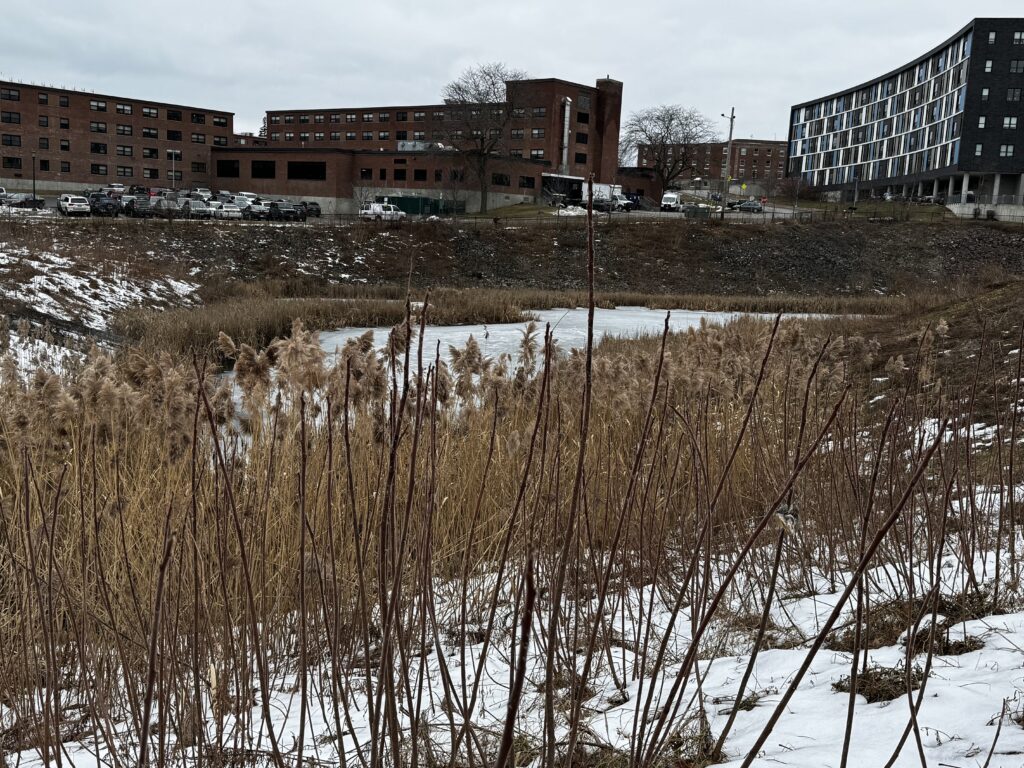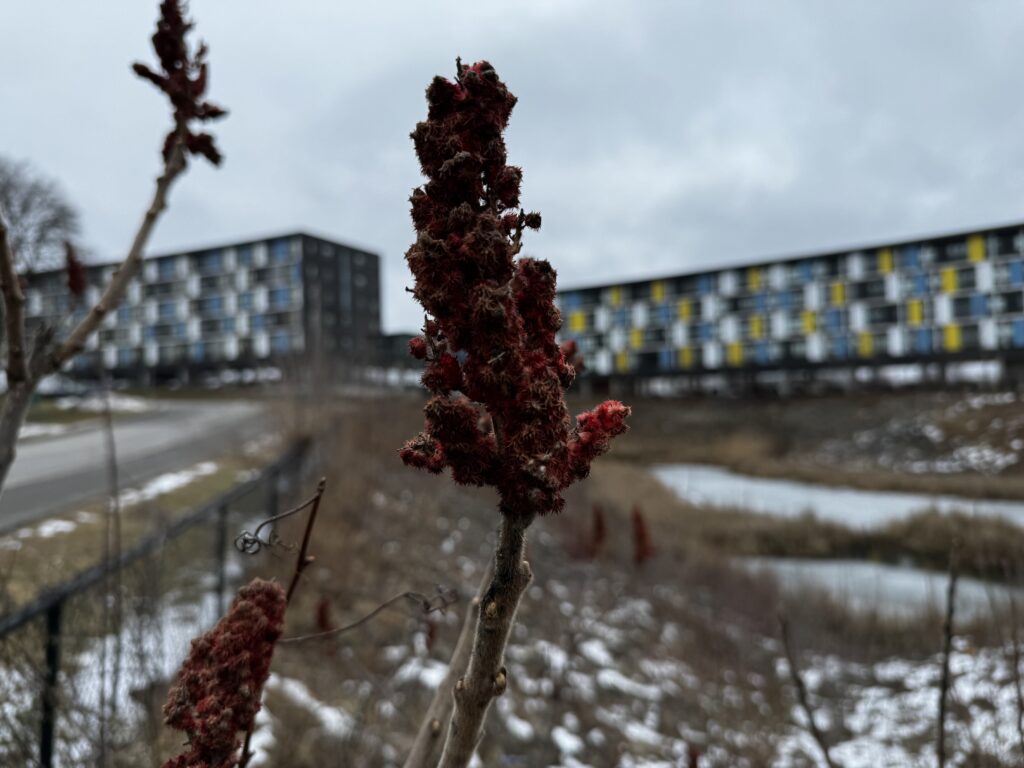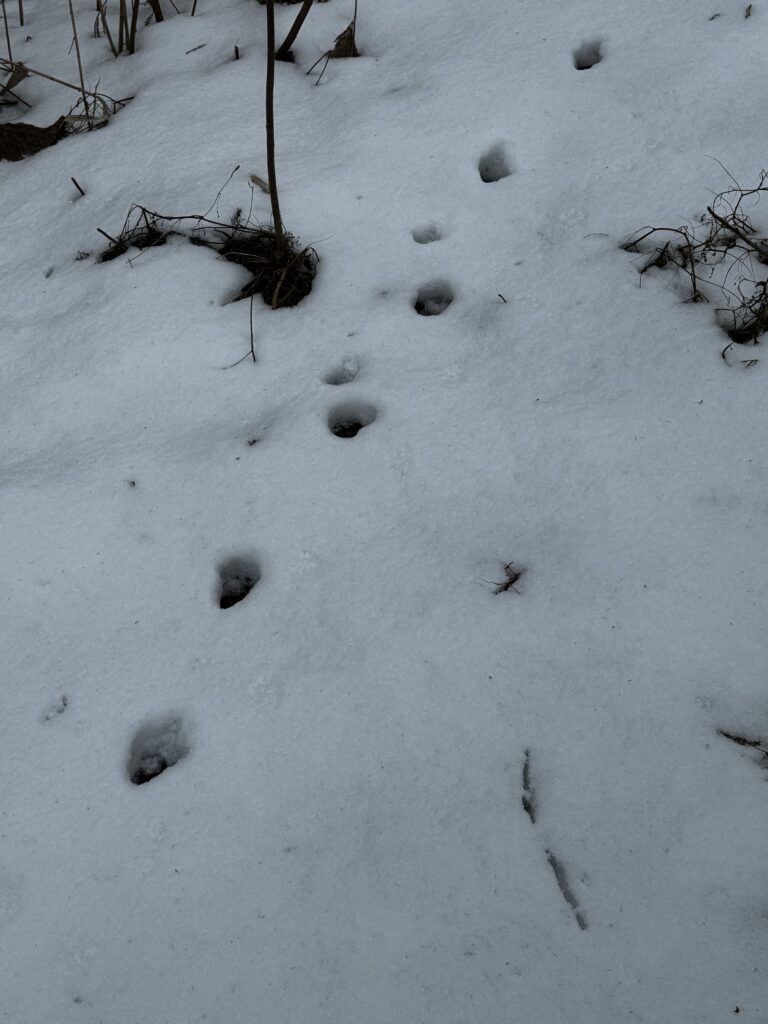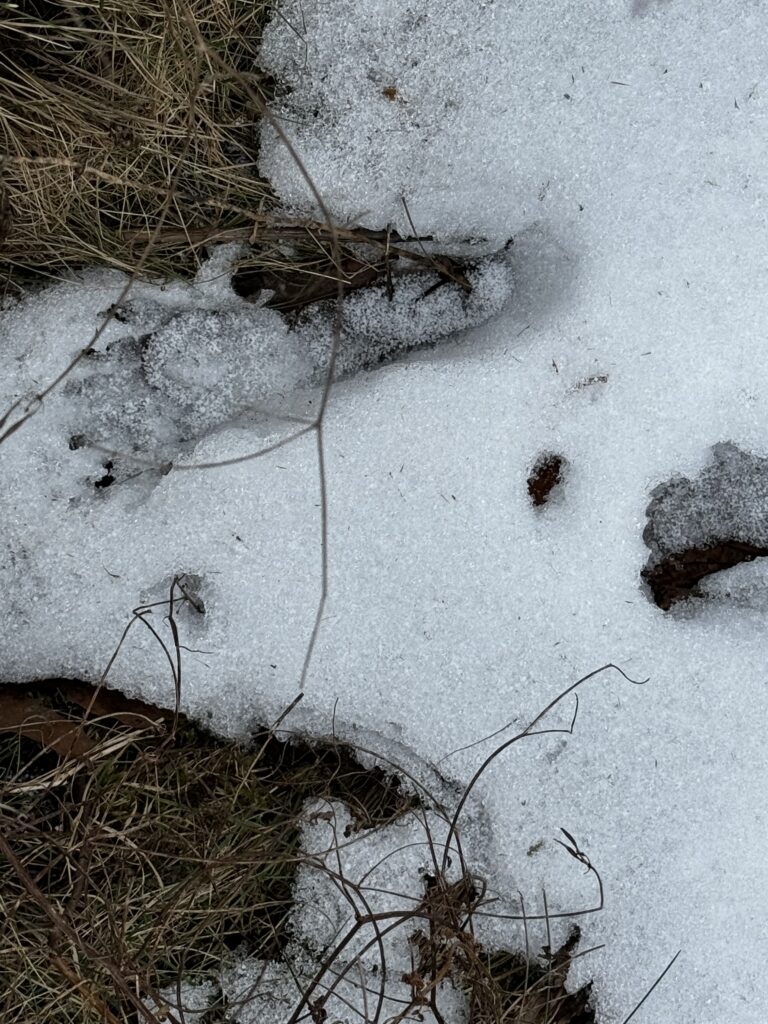Unlike my last post would like you to believe, I will be returning in the phenological study of the UVM Redstone stormwater drainage pond (hooray)!
Due to the extended period of cold and snowfall, there are a few key phenological changes to the pond. First of all, the pond has completely frozen over, and all foliage has been stripped completely bare. Last time we checked in, there was still a bit of green left on the grapevines and the mulberries, so there still looked to be a bit of life clinging on.

Because the woody foliage is now completely bare, it is easier for me to gauge the demographics of the stormwater pond. From a purely visual sample, it seems that mulberries make up a majority of the woody biomass. Since the sumacs are taller on average than the mulberries, and tend to cover them up, the prevalence of mulberries wasn’t apparent during the fall. While the two types of plants appear similar, you can tell them apart by the texture of their bark, and the fact that sumacs with female flowers have berries at the end of their branches.
As for the sumacs, they are still clinging onto their red berries. After doing some research, I learned that these berries can be turned into a variety of edible items. Sumacs are very important for the ecosystem due to the fact that their berries can provide an emergency food source for all sorts of wild birds and other animals (source: https://plants.usda.gov/DocumentLibrary/factsheet/pdf/fs_rhhi2.pdf).

Closeup of sumac berries
Animal Tracks
With the snowfall that is still present on the south side of the pond, I was able to observe a few different species. While I found plenty of human and dog tracks along the path that passes the pond, I also found signs of wildlife.

These tracks stood out to me because they were inside the fence, as opposed to all the other tracks which were outside. With no apparent holes in the fence, it lead me to believe that this is an animal that can climb. Also considering its size, a medium size animal, I was able to rule out skunk, fox, coyote, dog, squirrels, and rabbits. By this point, I was pretty much down to it being either a raccoon or oppossum.

When I got to the end of the trail, which terminated at the fence, I found this oddly human-looking footprint, which led me to believe that we have a little gremlin running around campus! Just kidding, of course this footprint was a sign of a raccoon, which stood up on its back legs to climb the fence.
While this was the only wildlife sign that I found on my visit, I can’t wait for more snow to fall, which will hopefully reveal so much more about the inhabitants of the stormwater pond.